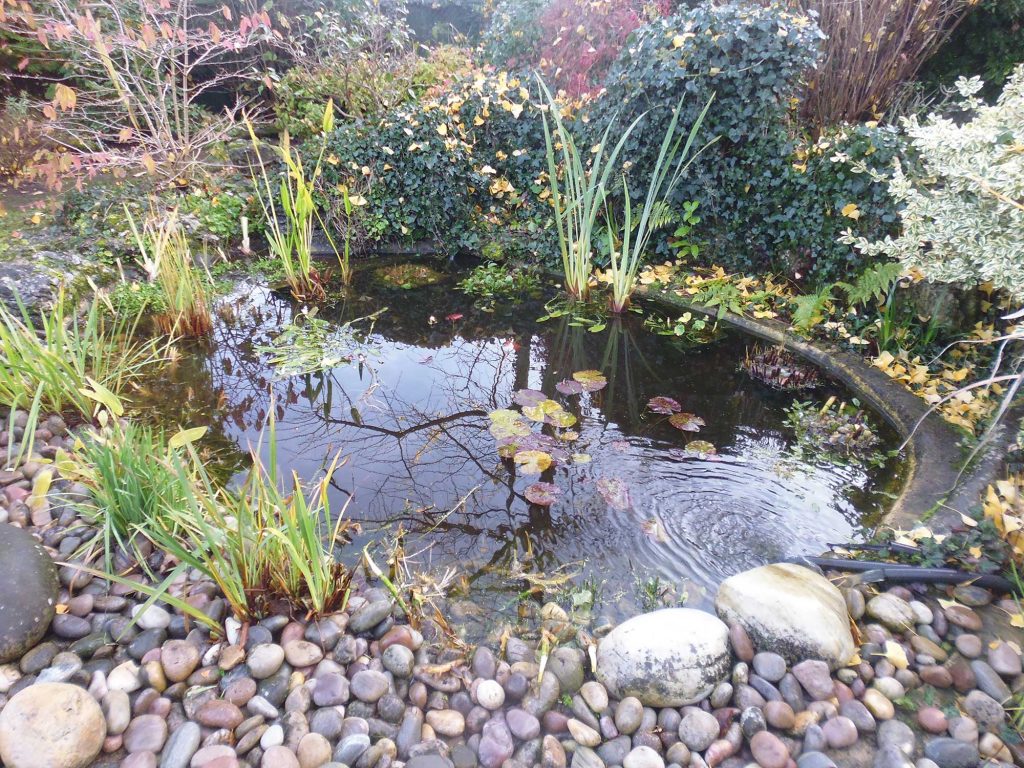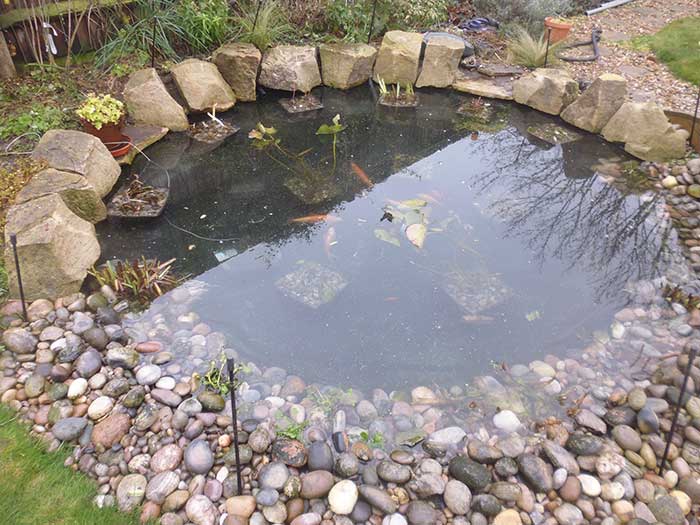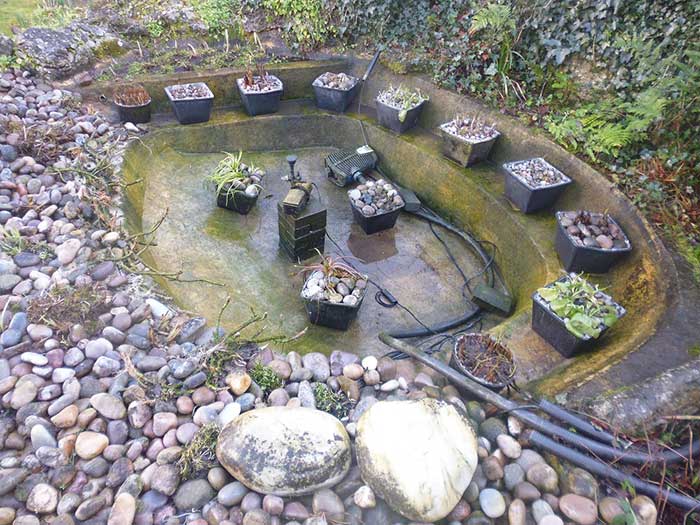
Winter Season
Winter Season Maintenance
Autumn can be said to be at an end and Winter to be here once the first frost has arrived. A hard frost will usually kill the remaining leaves on the plants. These dead leaves should be removed. If you don’t remove the dead leaves produced by the plants the pond will look scruffy and dead. Simply cut off the dead and browning leaves as they appear.

Pond Clean
If you think that there is nothing to do to the pond in the winter then you would be missing an important opportunity. Winter is the best time to drain and clean out the pond. This gives the pond time to recover and mature before the start of the growing season. Ideally you don’t want to be draining and disturbing the pond in the summer.
A pond clean out is an opportunity to remove the mud and leaves from the pond and to re-pot or replace water plants. While the pond is empty the pump and filter can be serviced.
Annual pond clean
Once a year is recommended for most ponds. If you have a very large pond and the effort, disruption and cost of the work puts you off from doing this every year then there is a case for delaying the work. Ponds that have not been cleaned out in three years will usually look messy and unloved. Five years is definitely too long. If your pond contains sensitive fish that are difficult to care for outside of the pond and don’t always respond well to the disruption of a pond clean out such as large koi then again there may be a case for delaying a pond clean out.
Water plants can grow and spread quickly and can lead to an overgrown pond. Mud will build up in the bottom of the pond. Autumn leaves can end up in the pond either by falling in directly or by being blown in from the surrounding garden. Filters can struggle to cope with a pond that contains a lot of mud. Pumps too can struggle with mud and leaves.

Plants & Filter Maintenance
Keep an eye on the pump flow. If the flow is significantly reduced, this indicates that the pump has become clogged, possibly with mud, leaves, blanketweed or other debris. The pump should be cleaned and serviced.
Most filters require some maintenance to prevent sediment and mud from clogging them up and reducing their capacity. Monthly attention is usually enough. If your filter is very muddy and needs more frequent servicing this might indicate that the pond is overdue for a clean out. If the pond contains too much mud it will quickly fill and clog the filter media.
Algae
Once the warm weather and sunshine has gone then problems with algae will be less. If your water is green then you might consider installing a filtration system for the pond. If you already have a filter and the pond is still green then there are several possible reasons for this. The filter might be in need of a service, perhaps the equipment is faulty or incorrectly installed or may be the equipment has not been correctly specified for your pond.
You might have clear water but have blanketweed growing in the pond. In the summer this is a fast growing green cotton wool like growth. In the winter this will continue to grow but more slowly. You will still need to do something about this. If you simply stop removal by hand and applying medication once the winter arrives you might find that over time you get a problem. A filter will not help you with blanketweed. Medication is usually the best approach. There is a bewildering choice of blanketweed medications available. Not many work well but there are products which can really help with this problem. We can help you choose the right product for your pond.
Feeding The Fish
During the winter the fishes appetites will drop and may stop altogether. The body fats that they built up over the summer will now become important and they will need these if they are going to make it successfully through the winter. Now that the weather is cold the fish will find it harder to digest high protein food and you should switch to a wheat germ based food. If you have simple goldfish then a general purpose fish food will probably be fine. You should not feed the fish unless the temperatures rise above about 11 degrees Celsius (if you are using protein based or general purpose food) or 6 degrees Celsius (if you are feeding them with wheatgerm). If the temperatures are high enough to allow feeding, only feed if the fish show appetite. It is a good idea to buy a floating fish thermometer to make judging when to feed easy. If the temperatures are high enough to feed but a cold snap is predicted in the next few days then don’t feed. For quantity, give them what they can eat in ten minutes. If there is uneaten food left over then you are giving them too much. Use pellets, or sticks if you have very large fish. Try and match the size of the food with the size of your fishes mouths. As a general rule of thumb if you test the pond water frequently (once a week) then you can feed your fish often and your fish will be safe. Infrequent or no testing (monthly or less) means you will be ignorant of the health of the water and judging how much food is the right amount and how often to feed is much more difficult. You can kill your fish quickly through overfeeding and slowly through under-feeding. Most fish like to be fed twice a day. Most ponds will quickly become polluted if you do this. A filter will help but there is no substitute for frequent testing which will give you warning of approaching trouble before it is too late. Frequent testing and keeping up to date with the quality of your pond water will allow you to assess how much and how often to feed your fish. Test for Ammonia and for Nitrite (Not Nitrate). I prefer dedicated test kits rather than tests that test for lots of things at the same time which can be a little confusing.

